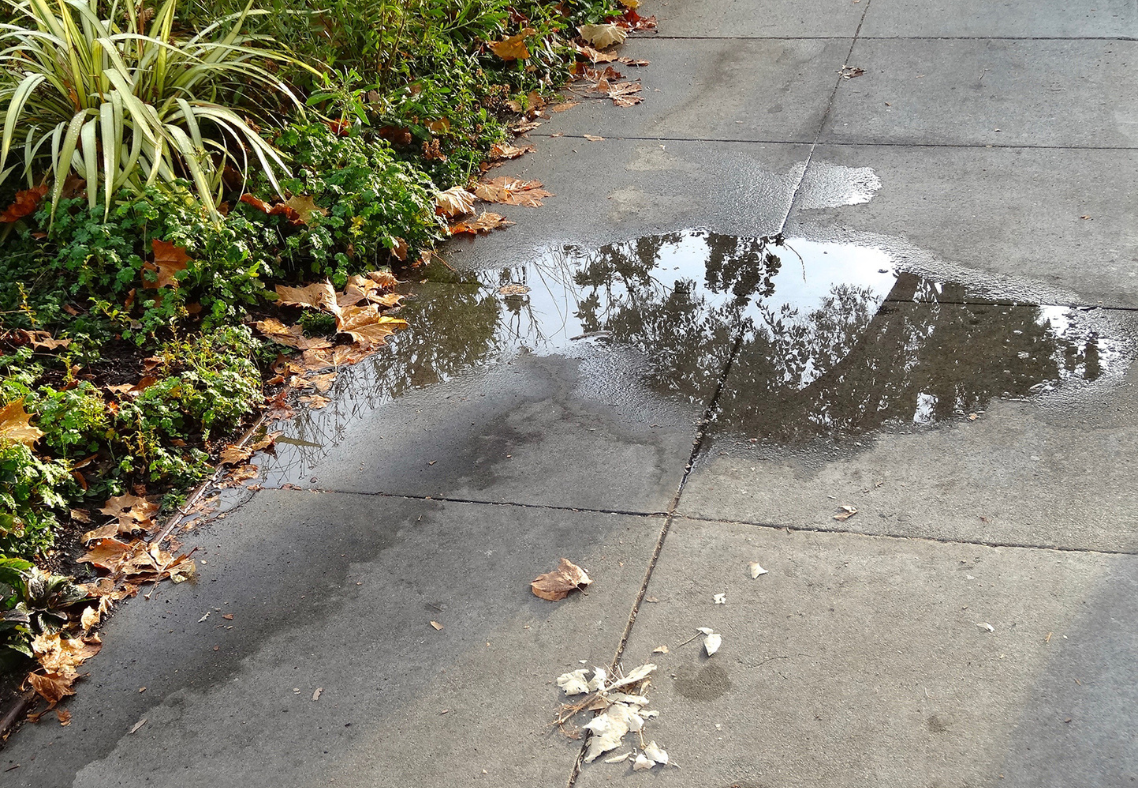How To Fix Pooling Water On Sidewalk | A Guide for Viriginia Homeowners
Contact UsPooling water on your sidewalk may seem like a minor annoyance, but for homeowners in Virginia, especially in areas like Herndon, Fairfax, and Loudoun County, it can signal deeper issues. Standing water not only creates slippery surfaces and safety hazards, but it can also accelerate deterioration of concrete, promote mold growth, and lead to soil erosion—especially when freeze‑thaw cycles take hold in winter. Addressing this issue promptly can protect both your property and pedestrians. In the unique context of Virginia’s heavy clay soils, frequent seasonal rains, and occasional high-volume storms, sidewalks often become collection zones for runoff. Whether it’s water dripping from gutters, compacted ground, or settled concrete slabs, identifying the root cause is essential to crafting a lasting fix.
How To Fix Pooling Water On Sidewalk | A Guide for Virginia Homeowners
Common Causes of Pooling Water on Sidewalks in Virginia
Understanding the reasons behind pooling is the first step toward a durable solution:
- Poor Grading or Sidewalk Settling: When a sidewalk slab is lower than the surrounding ground, water naturally flows toward it and settles. Over time, settled concrete can worsen the problem by trapping water in one place.
- Cracks, Uneven Surfaces, or Clogged Gaps; Drainage issues often arise when the sidewalk surface has cracks, dips, or is blocked by debris. These imperfections become spots where water collects instead of flowing away.
- Insufficient Slope or Improper Drainage Design: Sidewalks should slope slightly to encourage water to run off toward a drain or lawn. If they remain flat or slope inward, pooling is inevitable.
- Blocked or Missing Drainage Channels; Without proper drainage channels, such as trench drains or French drains adjacent to sidewalks, water has nowhere to go, worsening accumulation.
- Heavy Clay Soil and Compaction: Virginia’s clay-heavy soils drain very slowly. If your lawn or walkway area is compacted, water can’t soak in and may end up pooling on the surface—even on sidewalks.
Solutions to Prevent Sidewalk Water Pooling in Virginia
Here are effective strategies recommended by drainage and landscaping professionals:
1. Correct Grading or Lift the Sidewalk Slab
If the sidewalk is low and water pools there, correcting the slope or lifting the concrete back to its original level can restore proper drainage. Concrete lifting or mudjacking is often a quick and effective solution.
2. Install French Drains Alongside Sidewalk Edges
French drains consist of a trench filled with gravel and a perforated pipe, channeling excess water away from the surface. Installing one adjacent to a sidewalk can catch runoff and prevent surface pooling.
3. Use Trench or Slot Drains for Efficient Surface Collection
Trench drains (with grates) or sleek slot drains can be installed directly into the sidewalk to quickly divert standing water into underground systems. They enhance safety and extend the life of your walkway.
4. Maintain and Seal Cracks and Uneven Areas
Regularly inspect your sidewalk for cracks or irregularity. Filling in cracks with suitable concrete patching products prevents water from collecting and reduces long-term wear.
5. Improve Slope Around the Sidewalk
If the nearby landscape slopes toward the sidewalk, add soil or regrade the surrounding ground so water flows away from the walkway and into lawns or plant beds instead.
6. Clean Gutters, Extend Downspouts, or Add Rain Collection Systems
Make sure gutters are debris-free and downspouts direct water well off the sidewalk—preferably toward rain barrels, swales, or rain gardens that can absorb runoff.
7. Add Rain Gardens or Dry Wells Nearby
For eco‑friendly drainage, rain gardens planted with native, water‑tolerant species can soak up excess water. Dry wells are also an efficient way to collect runoff and allow it to slowly percolate into the soil.
Why Virginia Homeowners Should Act Now
- Winter Freeze/Thaw Damage: Water that pools on cracks or edges of sidewalks can freeze and expand, causing concrete to crack more severely over time.
- Local Soil Conditions: Clay soil slows drainage dramatically, so addressing pooling now helps prevent persistent problems.
- Safety Concerns: Pooling sidewalks create slip-and-fall hazards, which are liability concerns for homeowners and dangerous for children and pets.
By choosing a custom solution tailored to your yard’s slope, soil, and layout, you can protect your sidewalk year‑round.
Contact Constructology Today For Drainage Solution Services In Virginia
If your sidewalk is turning into a puddle zone and causing repeated headaches, Constructology is here to help. Our experienced team in Herndon and surrounding Northern Virginia communities understands local soil conditions and seasonal rainfall patterns. We offer comprehensive assessments and tailored solutions from sidewalk lifting and trench drains to French drains and landscape regrading, to ensure your sidewalk stays safe and dry. Don’t wait until the next rainstorm or freeze‑thaw cycle makes the problem worse, contact Constructology today to schedule your inspection and get a clear plan for repair. You can rely on our expert workmanship, local knowledge, and commitment to lasting results. Let us help you protect your property, improve safety, and enhance your home’s curb appeal today.

